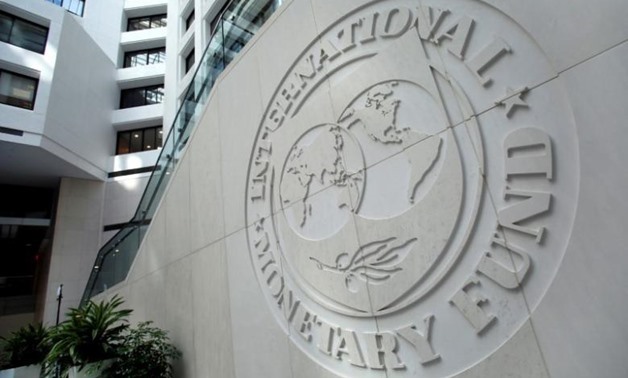
The International Monetary Fund logo is seen inside its headquarters at the end of the IMF/World Bank annual meetings in Washington, U.S., October 9, 2016. REUTERS/Yuri Gripas
CAIRO - 2 May 2018: Regional growth in the Middle East, North Africa, Afghanistan and Pakistan (MENAP) is estimated to have reached 4.2 percent in 2017.
It is projected to increase further to 4.7 percent this year and to 5 percent on average during 2019–23, with some countries experiencing appreciably faster growth.
Further strengthening of the outlook for the euro area will continue to support economic activity through exports, remittances, foreign direct investment, and tourism, according to the International Monetary fund (IMF).
In its report on the Middle East, North Africa, Afghanistan and Pakistan (MENAP) region published Wednesday, the IMF said the outlook for Egypt has improved relative to the October 2017 forecast.
In the context of its IMF-supported program, improving confidence is boosting private consumption and investment, adding to the increase in exports and tourism.
Growth is projected to rise to 5.2 percent in FY 2018 (from 4.2 percent last year) and accelerate further to 5.5 percent in FY 2019, aided by an increase in gas production. Improved energy supply, investment related to the China-Pakistan Economic Corridor, and strong credit growth helped to raise Pakistan’s growth to an estimated 5.6 percent in FY 2018, from 5.3 last year.
Following three years of decline, exports of MENAP oil-importing countries grew by 6.4 percent in 2017 and are projected to accelerate by 8.4 percent in 2018 and 8.6 percent in 2019.
This largely reflects improved external demand, greater exchange rate flexibility (Egypt, Pakistan, Tunisia), gains in competitiveness (Morocco, Tunisia), and a pickup in the prices of phosphates (Morocco, Tunisia), metals (Mauritania), and cotton (Pakistan).
In contrast, despite the impact of higher oil prices relative to 2017, import growth is projected to slow to 4.8 percent in 2018 (from 6.8 percent in 2017) and remain broadly steady around 5.5 percent over the medium term.
This import compression partly reflects an anticipated slowdown in capital imports for infrastructure projects (Djibouti, Mauritania, Pakistan).
The region’s current account deficit is, therefore, projected to narrow from 6.5 percent of GDP in 2017 to 6.2 percent in 2018, and further to 5.7 percent in 2019.
To take full advantage of the growing global economy, the region should accelerate key economic reforms. The focus should be on improving the investment climate, boosting productivity, and strengthening governance,” said Jihad Azour, Director of the IMF’s Middle East and Central Asia Department.
Countries in the region also need to integrate further into the global economy and diversify their products and services. This will require greater access to finance for the private sector (especially small and medium-sized enterprises) and upgrading workforce skills


Comments
Leave a Comment